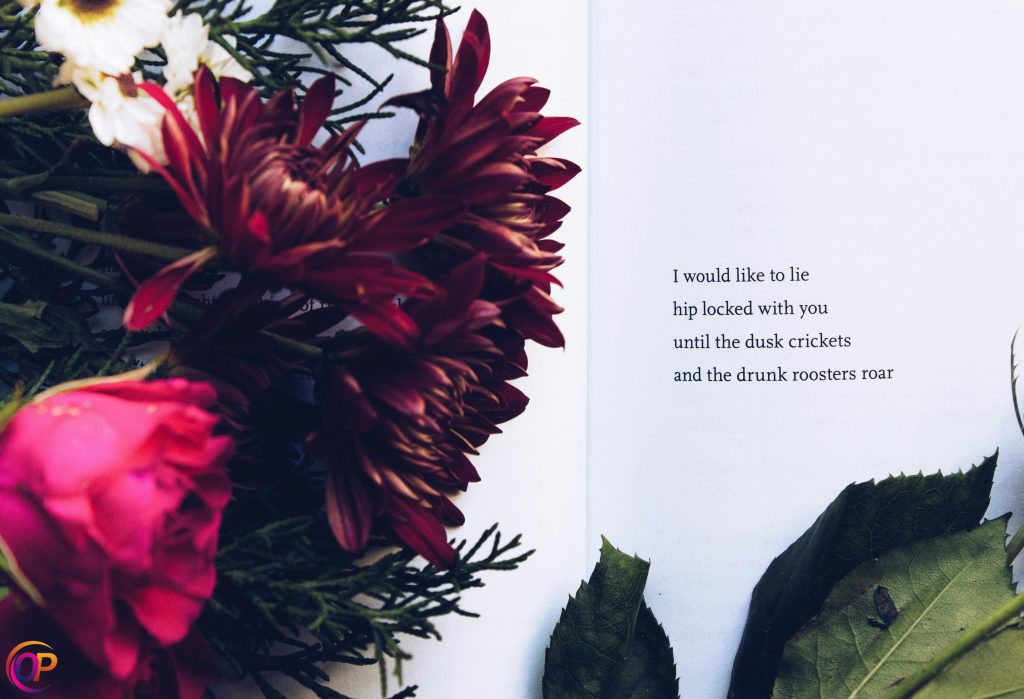Similar to all other emotions, sadness is a basic part of being human. How to write sad poems is one of the most important techniques to convey and digest the different ways it affects our life. Writing sad poetry involves more than just expressing sadness; it also involves exploring the depths of the human mind and sharing feelings in a way that speaks to other people.
How to Write Sad Poems
Deep in the darkness where voices die down,
Dark sounds slowly spread.
With every drop of tears, a quiet prayer,
Lost in the hole where love runs away.

A tune of sad notes,
ringing across silent streets.
Where once there bloomed a garden fair,
It lies now stark, removed, and lonely.

Under the full moon, in the quiet of the night,
A heart left and a soul troubled lies.
A symphony of sighs fills the air,
As grief crafts its rich web.

Oh, how the stars weep, their tears unseen,
Where dreams fall across the wide open skies.
A tapestry of pain, woven with care,
A sign of the weight we carry.

So let the tears flow, let the heart grieve,
Let sorrow split open in the still a vacuum.
For in the depths of despair, we find release,
And may peace spring from the ash of sorrow.
Introduction to How to Write Sad Poems
What are sad poems?
Poetry dealing with themes of sadness, sorrow, loss, and love is referred to as sad poetry, sorrow poetry, or how to write sad poems. These poems explore the depths of human emotion and provide the writer and reader with comfort, reflection, and relief.
Importance of expressing emotions through poetry
Poetry has always been valued as a vehicle for relaying complex feelings. Sad poetry gives people a way to express and address their inner pain, giving them a sense of empathy and support during trying times.
Understanding Emotions for How to Write Sad Poems
Delving into sadness
Knowing the nuances of sorrow is important before starting the process of crafting sad poems. A complex emotion, sadness can include a variety of emotions, such as sadness, despair, a sense of and love.
Exploring the human experience
Stress is a common human emotion that cuts across age, gender, and cultural divides. Poets can connect deeply with people by exploring the depths of despair because it allows them to reach out into the mind of all people.
Finding Inspiration
Drawing from personal experiences
Personal experience is one of the most powerful sources of inspiration for sad poems. Drawing from one’s own experiences and emotions gives poetry, whether it be about profound pain, sadness, or loss, truth and depth.
Observing the world around you
Poets might get ideas from the outside world along with their own emotions. How to write sad poems can be sparked by the sadness that can be felt when seeing people, nature, and everyday events.
Setting the Mood of How to Write Sad Poems
Creating the right atmosphere
Creating an environment which promotes study and prayer is often necessary while writing how to write sad poems. Setting the mood, whether it is for a rainy day, a darkly lit space, or a lonely walk in the outdoors, may help in putting feelings into words.
Tapping into melancholy vibes
You can find sad vibes in literature, art, music, and even in everyday events of everyday life. Poets can access the core loss that underlies life by putting into these situations.
Crafting the Structure of How to Write Sad Poems
Choosing poetic forms How to Write Sad Poems
There are many different styles of sad poetry, such as songs, poetry, and free verse. Poetry can be said in a number of ways, with each poetic form providing its own set of chances and limits.
Experimenting with rhyme schemes and meter
While a few sad poems follow normal rhyme and meter schemes, others ignore official rules in favor of a more natural flow. Changing up the pace, rhyme, and rhythm can improve the poetry’s emotional impact.
Harnessing Imagery
Painting vivid pictures with words
A potent tool in the poet’s toolbox, imagery enables them to arouse feelings in the reader through vivid language and sensory detail. Poets have the ability to take readers right into the heart of their despair by using words to paint pictures.
Engaging the reader’s senses
Poems able to capture the reader’s emotions and draw them into the poem’s universe use physical appeal. Involving the senses may produce a physical reaction from the reader, whether it’s the taste of tears, the smell of rain, or the sound of quiet.
Conveying Emotions of How to Write Sad Poems
Using metaphors and similes
In sad poetry, similes and similes are crucial tools for expressing nuanced feelings. Poets can make abstract feelings accessible and visceral by drawing links between sad and concrete things or experiences.
Evoking empathy and connection
Sad poetry’s main objective is to make the reader feel connected and emotional. Poets can create a strong emotional connection with their audience by drawing on shared feelings and events, which promotes compassion as well as comprehension.
Honesty and Vulnerability
Being authentic in your expression
In sad poetry, truth is key. Even if it means sharing their most primal emotions to the public, how to write sad poems needs to be willing to accept their weaknesses and face their deepest emotions head-on with honesty and reliability.
Embracing raw emotions for How to Write Sad Poems
Poems on sadness aim to accept it in its various forms and rawness, without imagining or masking it. Poets can produce poetry that connects with honesty and truth by facing the depths of their emotions head-on.
Editing and Refining
Polishing your poem
Poetry writing on sadness needs a lot of fine tuning and editing. It’s key to take a step back, assess, and edit your how to write sad poems once you’ve bled your guts onto the page. Continue this process until your poetry is very clear and speaks.
Seeking feedback and revisions
In the writing process, feedback is quite helpful, especially for sad poems. Getting input from guides, close friends, or other poets can help you refine your work and take your poetry to new levels with helpful feedback.
Dealing with Writer’s Block
Overcoming creative hurdles
Poets often deal with writer’s block, especially when they are writing about strong emotions like sadness. Poets can try adjusting their setting, taking pauses, or playing with different writing activities or ideas to get beyond creative blockages.
Exploring alternative perspectives
You may get past writer’s block by taking on a different view. Try writing from an angle of a fake character, an object, or even an abstract idea to allow yourself to explore new creative directions rather than focus only on your own life events.
Sharing Your Work of How to Write Sad Poems
Finding the right audience
Sharing your sad poem with the world is the next step after writing it. Whether you decide to read your poetry out at open mic nights, post it online, or send it to other books, getting the correct audience is crucial to getting in front of people who will enjoy and relate to your writing.
Seeking feedback and support
While sharing your poems can make you feel at risk, it can also be very enjoyable. Look for groups of other poets who can help you develop as a writer with helpful feedback, support and support.
Coping Through How to Write Sad Poems
Using poetry as a therapeutic outlet
Writing sad poetry is a common kind of therapy and self-care for poets. Poets can turn suffering into beauty and sorrow into art by expressing their feelings through their work and gaining knowledge, view, and healing.
Healing through self-expression
Poets can face their inner angels, process their loss, and find comfort in the act of creation when they write sad poetry. People can find healing and release by using the power of poetry to convert their pain into something deep and meaning.
Examples of Sad Poems

Analyzing renowned works
Reading the poetry of well-known authors might bring you insightful ideas and energy for your own sad poetry. The masters of tragic poetry have much to teach us, from the dark lines of Plath’s poems to the haunting songs of William H. Auden.
Drawing inspiration from classics
Not only can modern poets provide a wealth of ideas for sorrowful poetry, but classic writing also does. Classic literature, such as Emily Dickinson’s moving views on death and sorrow or Shakespeare’s sad sonnets, can be a creative inspiration for aspiring poets.
The Impact of Sad Poetry
Connecting with readers on an emotional level
Sad poetry has the ability to move readers to tears and have a profound effect on them. Poets can create a strong bond with their audience by drawing on shared feelings and experiences, leading to compassion, kindness, and unity. Read more..
Fostering empathy and How to Write Sad Poems
How to write sad poems shines a light of kindness and compassion in a world full of misery and suffering. Readers can develop feelings of empathy, compassion, and unity by seeing the hardships and losses of others, which promotes a sense of oneness and shared humanity.
FAQs
Q: Can anyone write sad poems, or is it reserved for those who have experienced profound sadness?
A: While personal experience can certainly inform and enrich sad poetry, anyone with a deep understanding of emotions and a knack for words can write compelling sad poems.
Q: How can I overcome the fear of sharing my sad poetry with others?
A: Sharing your poetry can be a vulnerable experience, but remember that vulnerability is the birthplace of connection and creativity. Start by sharing your work with trusted friends or fellow poets who can offer constructive feedback and support.
Q: Are there any ethical considerations to keep in mind when writing about sensitive topics like sadness and grief?
A: It’s essential to approach topics like sadness and grief with empathy, sensitivity, and respect for the experiences of others. Avoid romanticizing or trivializing these emotions and strive to create poetry that honors the complexity of the human experience.
Q: How can I find inspiration for sad poems when I’m feeling emotionally drained or numb?
A: Sometimes, inspiration strikes when we least expect it. Try immersing yourself in art, music, literature, or nature, or experiment with writing prompts or exercises to jumpstart your creativity.
Q: Can writing sad poems help with healing and coping with personal struggles?
A: Absolutely. Many poets find solace, catharsis, and healing through the act of writing how to write sad poems. By channeling their emotions into creative expression, individuals can gain insight, perspective, and a sense of empowerment in the face of adversity.
Conclusion
Poets can confront their deepest feelings, find comfort in the act of being, build a connection with readers through the deeply personal and helpful experience of writing how to write sad poems. Poets can turn pain into beauty and sorrow into art by using words to express their pain, grief, and love. This creates a lasting impression on the hearts and minds of those who hear them.
